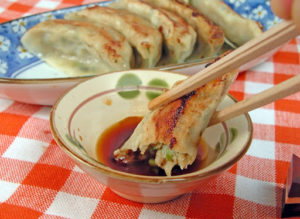
Dunking dumplings into soy sauce is probably one of life’s little pleasures.
Dunking dumplings into soy sauce is probably one of life’s little pleasures. Have you also tried dousing your freshly steamed white rice in it? It tastes exquisite. As good as the rice you boil in the bag is, there’s just something uniquely magical about scooping it out of the rice cooker with its own special spatula. But even you aren’t familiar with Chinese condiments in general, you’ve probably noticed that soy and hoisin are not the same sauces.
A Look at the History of Soy-Based Sauces
The special brew known as soy sauce has been a staple of Chinese food for over a thousand years. In that time, it’s no surprise that it has spread out to the rest of the continent as well. People living in Japan, Korea, and all over Southeast Asia are fond of it, too. The key ingredient in this mixture is the fermented soybean. The resulting liquid is then used to enhance the flavors of stir-fry dishes, marinades, and braised meats. Other ingredients include salt, wheat, and yeast. That’s why finding gluten-free varieties matters so much when someone in your family has a gluten intolerance or even full-blown celiac disease.
And a Closer Look at What Hoisin Is
Even though they look identical, soy and hoisin are not the same. Besides soybeans, hoisin is formulated with garlic, sesame oil, chilies, vinegar, and some sweetener for good measure. For lovers of Korean barbecue, you’ll be pleased to know that hoisin is considered the Chinese equivalent. When you look up various Cantonese recipes, you’ll notice that hoisin shows up in almost all of them; this condiment is also incredibly popular in Vietnamese cooking.
Texture Distinguishes the Two Sauces
Ultimately, it’s the texture that helps you tell the two apart. That’s because hoisin tends to be thicker and taste sweeter. But if you need a thickener for your noodle dish or your next stir-fry, hoisin is your best friend. It can also be a secret weapon when you’re making a tasty dipping sauce. Such sauces can accompany egg rolls and other appetizers. Use your imagination! Want to try making some yourself? Creating this concoction isn’t hard. Soy sauces (even gluten-friendly ones) are a good base. Then, you’ll want to add garlic, honey, white vinegar, and Vietnamese-style hot sauce (you’ll know which one we mean!) That way, you can kick up the spice level however much you want. Gochujang can also be a substitute if you’re feeling particularly adventurous!
Get All Your Asian Groceries at Lotte Plaza Market
Lotte Plaza Market is your go-to destination for all of your Korean and Asian grocery needs. With more than 10 Maryland and Virginia locations, this growing market is continually expanding and opening new markets to serve our customers better. Since we opened in 1976, our goal has always been to provide the best customer service and groceries to our customers. For answers to all of your questions, please email us at LottePlaza.com.
